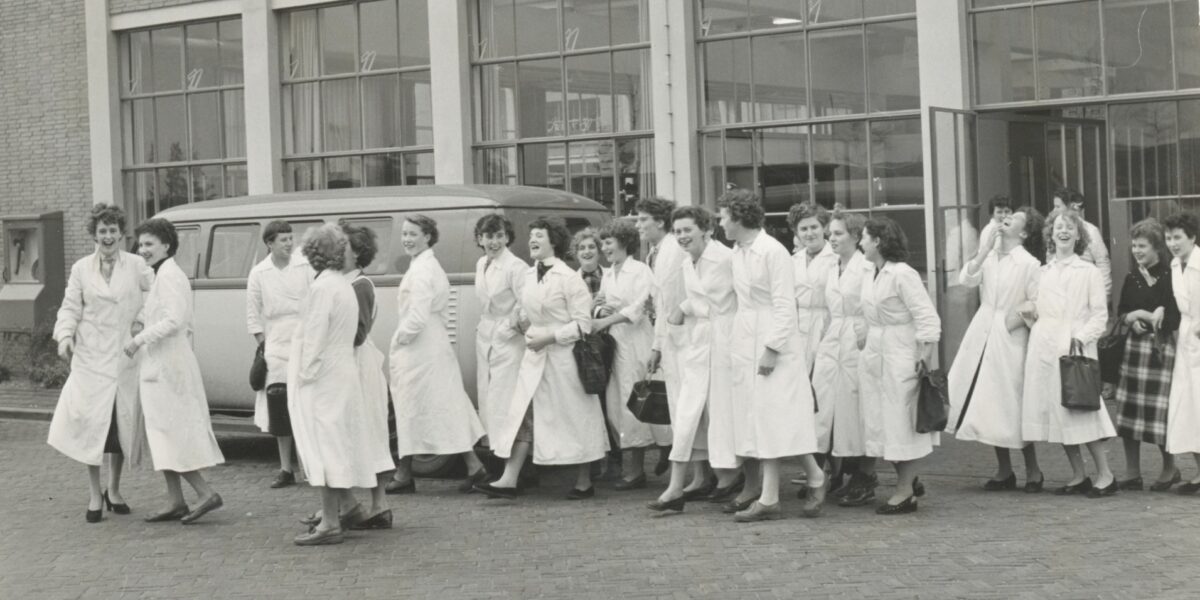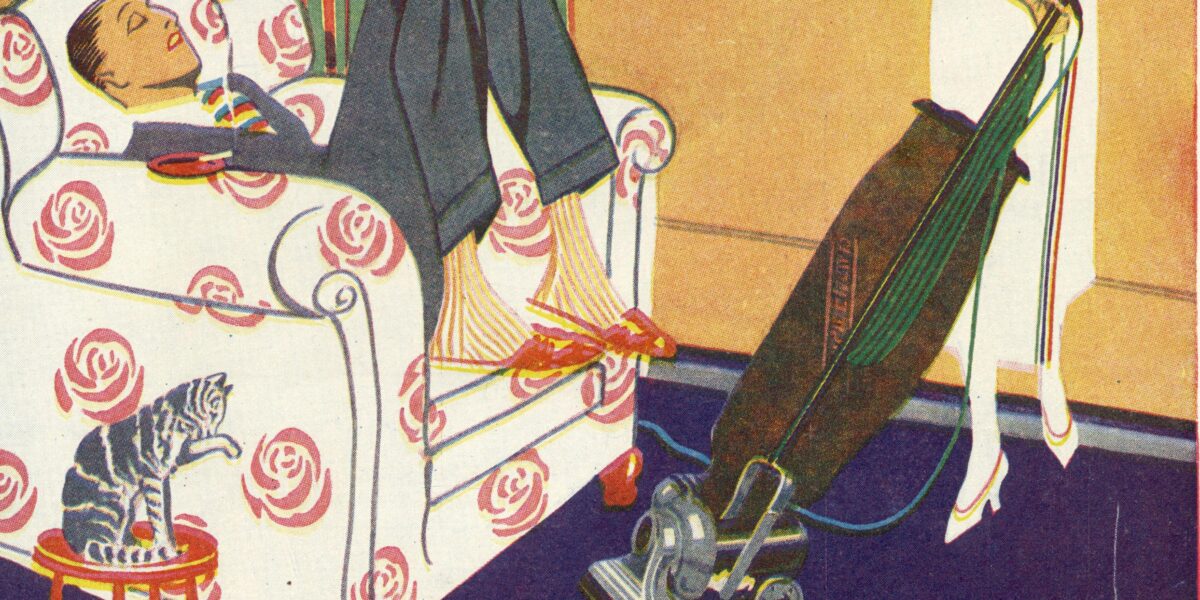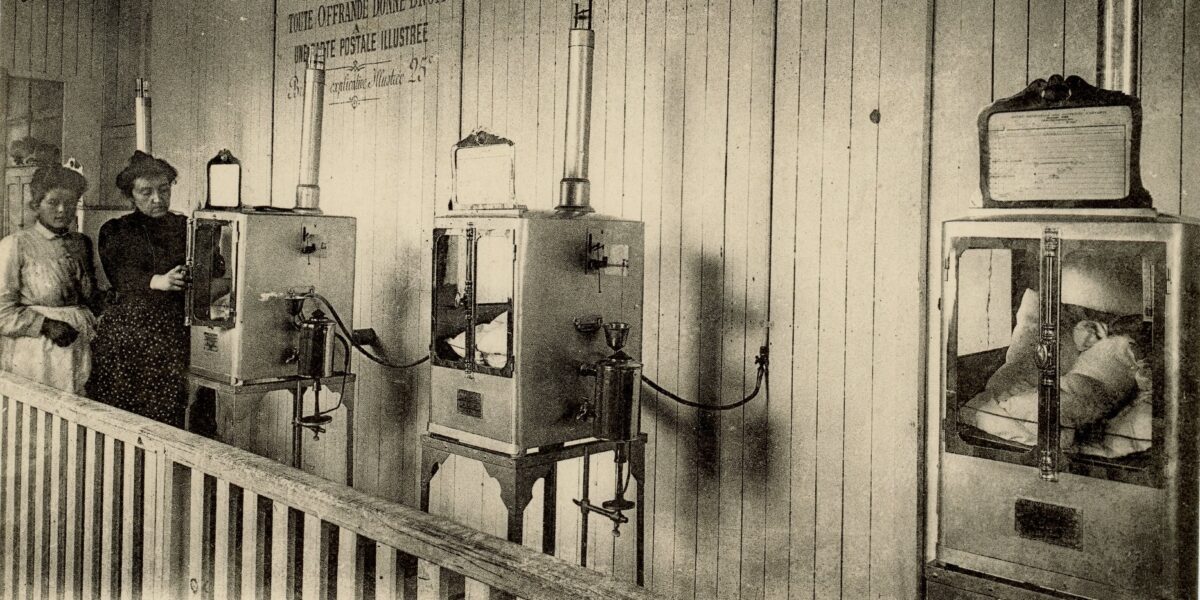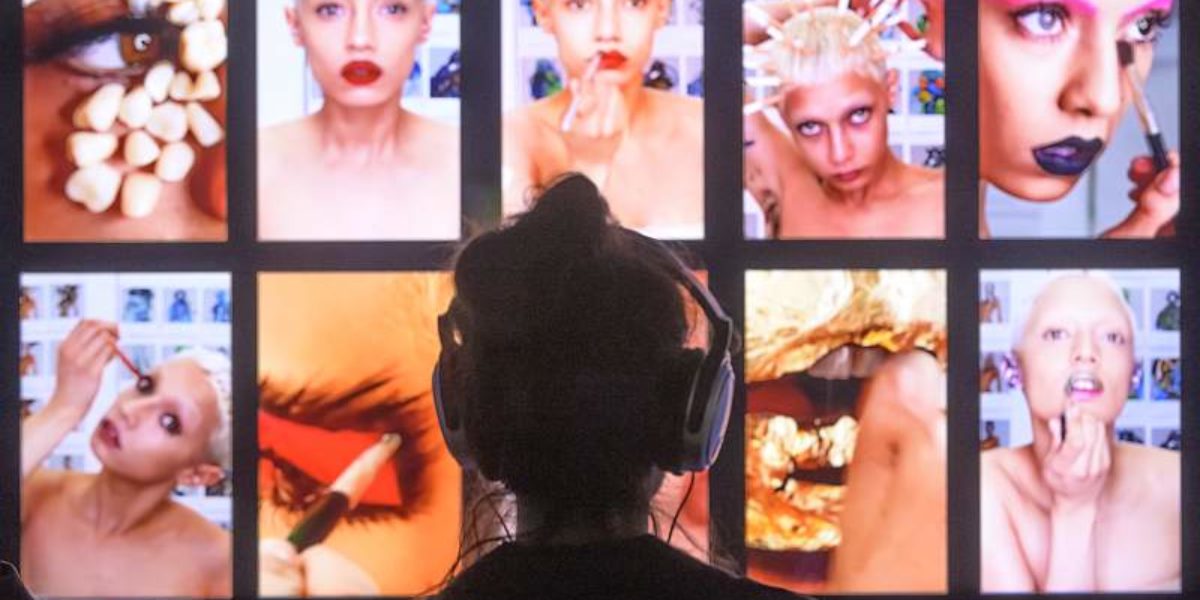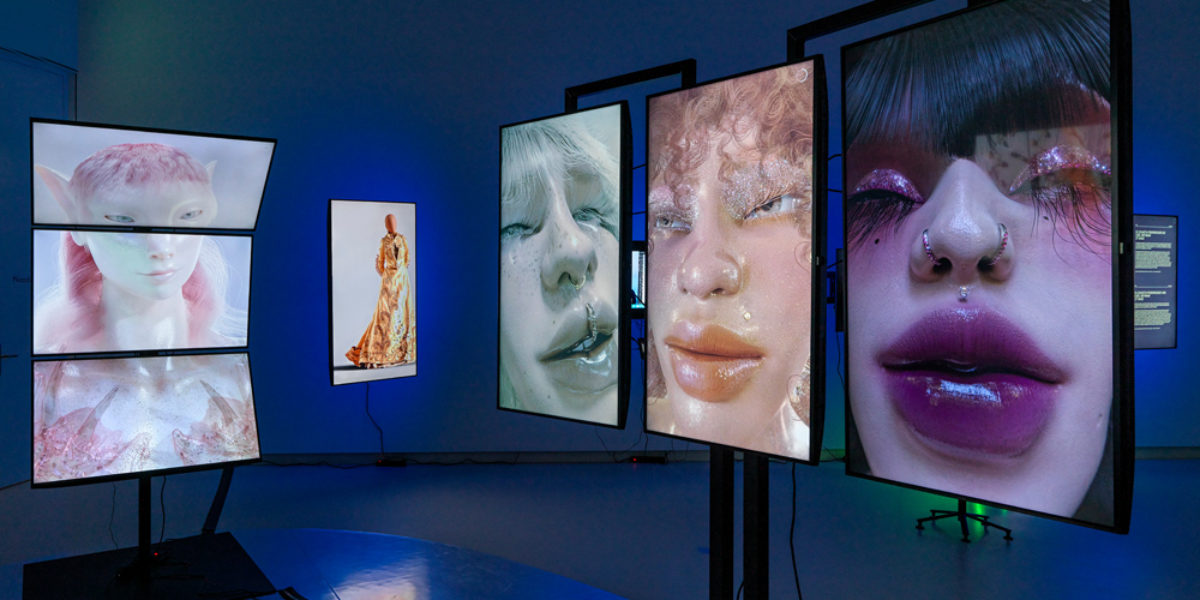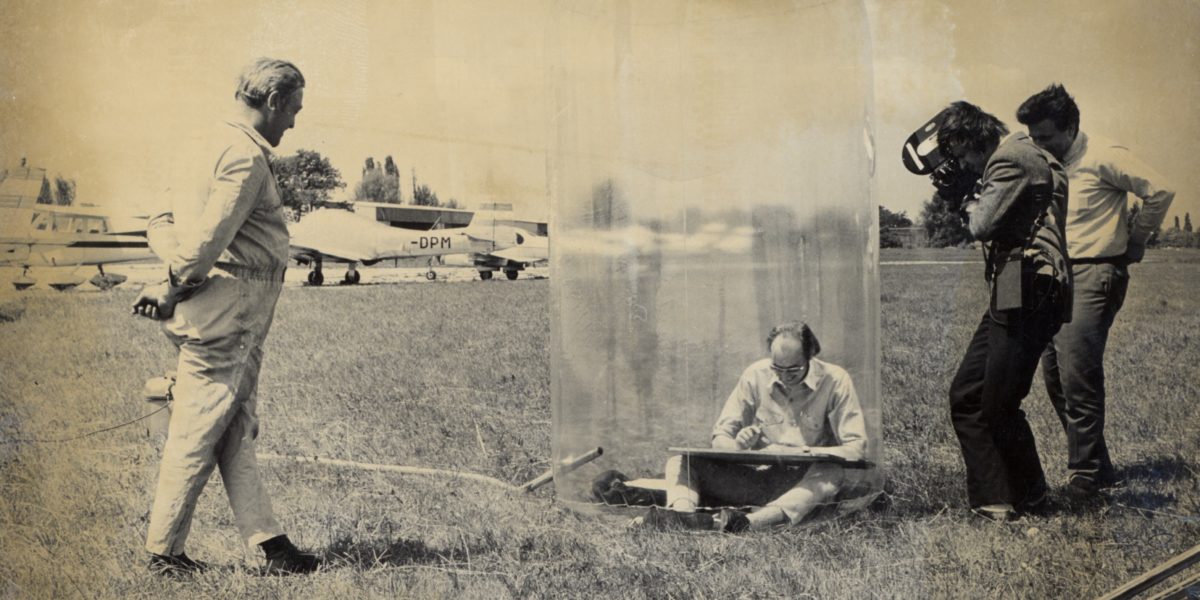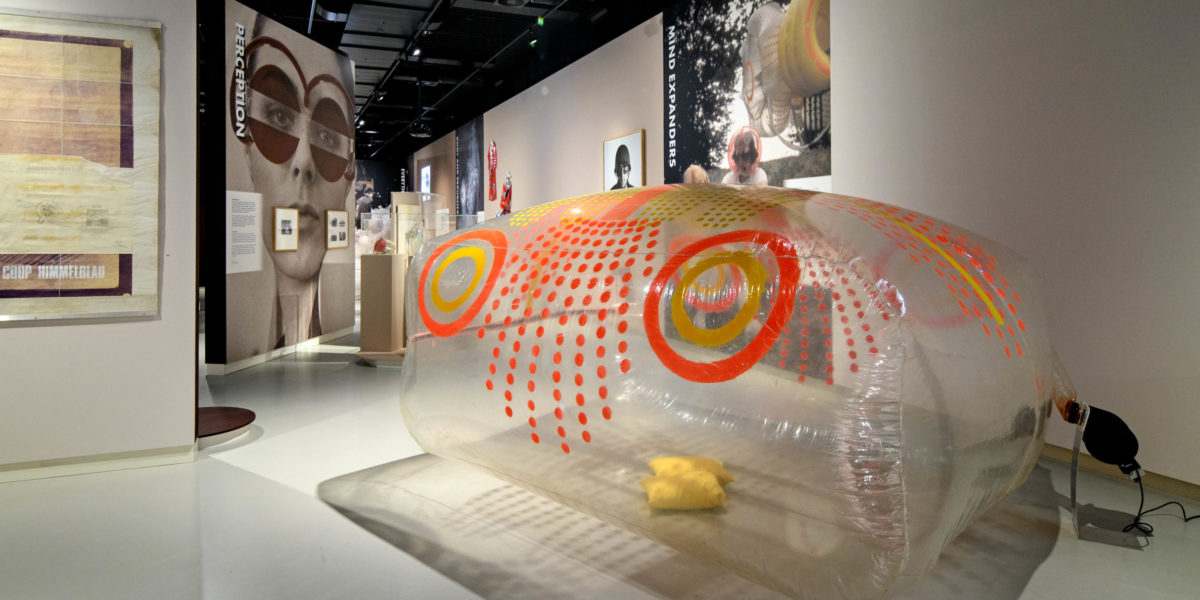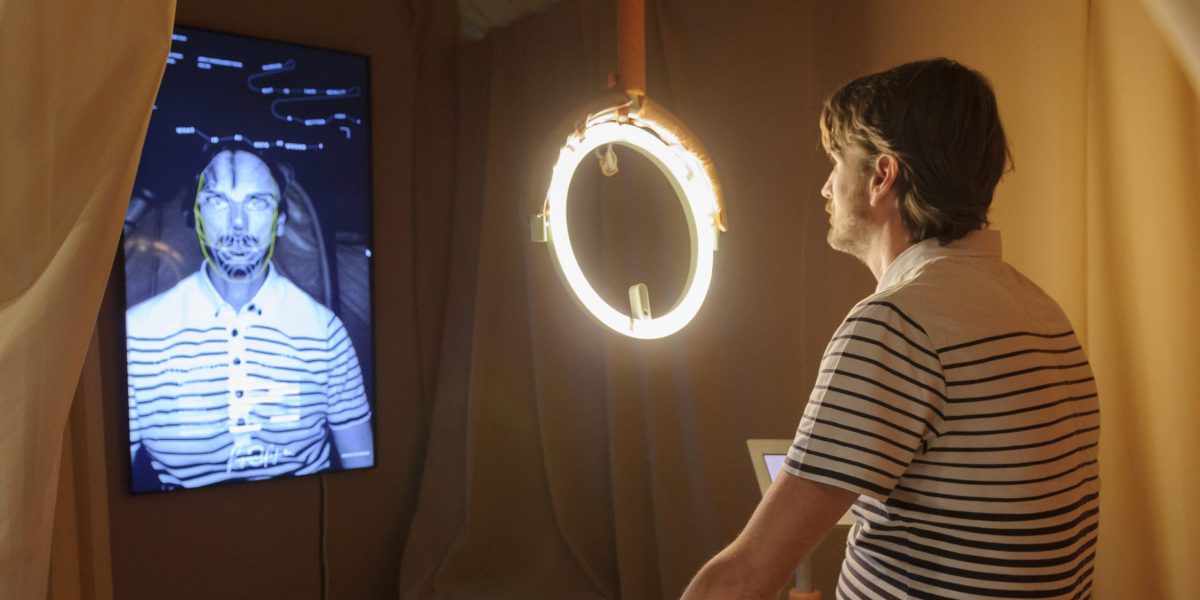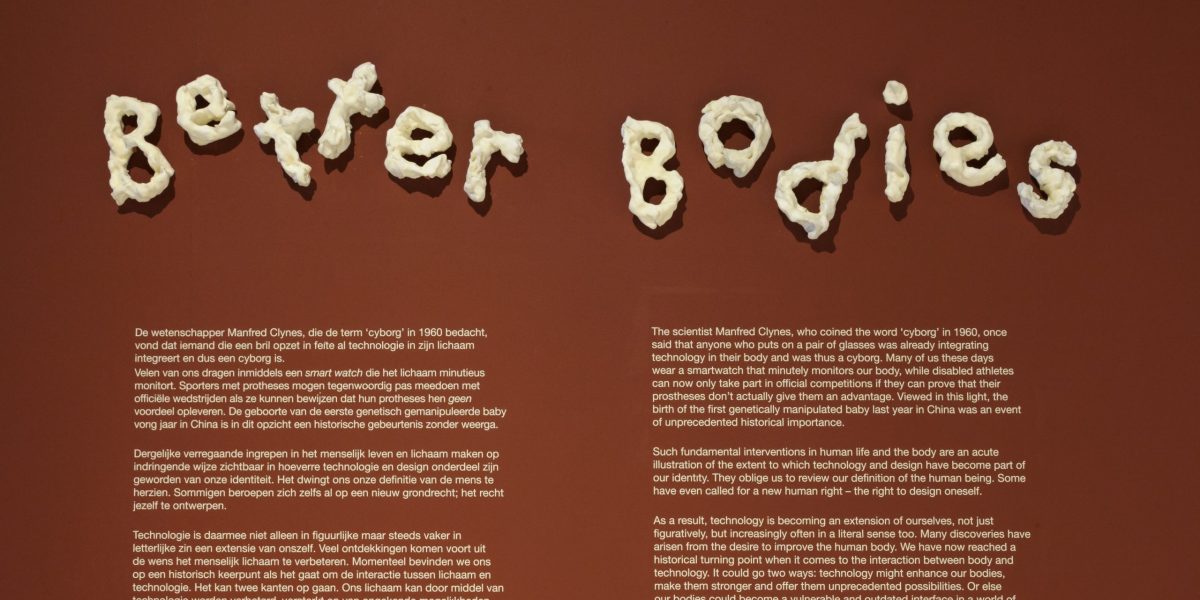Sleek, Not Sleazy: Natural Contours Vibrators
Hallie Lieberman is a sex historian and journalist. Her recent book Buzz chronicles the history of sex toys and the innovators who transformed them from taboo objects into mainstream products. For the Third Floor, she explores a Dutch design legacy: how Jandirk Groet, designer of Fokker airplanes, partnered with American feminist porn director Candida Royalle to create Natural Contours—a vibrator line that challenged phallic designs and helped bring women’s sexual pleasure into the mainstream.
Sleek, Not Sleazy: Natural Contours Vibrators
When feminist porn director Candida Royalle (1950-2015) and Dutch designer of Fokker airplanes Jandirk Groet joined forces in the late 1990s, a new line of vibrators was born that looked more at home in an art museum than a bedside table. This is the story of how their unlikely collaboration came to be and how their sex toys turned vibrators from sleazy to sleek.
Royalle hadn’t aspired to be involved in the adult industry. She dreamed of acting. When mainstream work couldn’t pay the bills, she became a porn actress, eventually starring in over 20 films. She transitioned to directing in 1984, founding her company Femme, to distribute her porn movies for women and couples. Royalle became the most famous female porn director in the United States, but by the mid-1990s, she was ready to try something new.
So when Groet contacted Royalle in 1996, asking if she wanted to collaborate on vibrator a line, she said yes. Groet’s resume made him a wildly unlikely man to design vibrators. His designs included airplanes, ski boots and refrigerators. Yet Groet wasn’t fazed. “I approach a sex toy in the same way as any other product I design,” he told I.D. Magazine.Christina Valhouli, “The Naked Truth,” I.D. Magazine, April 2001, 64.×
Royalle knew vibrators needed a redesign. The devices’ garish designs were partly to blame for their failure to break into the mainstream. So, she and Groet embarked on an informal survey of women-owned sex toy stores. What did women want in a vibrator? They asked. The answer: something that was high quality and discreet.
It made sense that women wanted vibrators to be more discreet, as women felt ashamed to buy sex toys, because they were primarily used for masturbation, something widely stigmatized. They were also intimidating to many men, and even illegal in several states in the U.S. For Royalle, who was an ardent feminist, a discreet sex toy was more than just a product to be sold, it was a statement about women’s sexual pleasure, which she saw as a right and not a privilege. “Most women still find the act of buying and owning dildos and vibrators to be embarrassing because of the fact that most of these products have a rather crude appearance—shaped like big pink phalluses,” Royalle and Groet wrote in their business plan. “This product line will serve to give women the permission and encouragement they need to explore their bodies and better understand their sexual needs.”“Introducing the Femme Line of Products for Women,” Candida Royalle Papers, 1920-2017; Box 102, folder #2. Schlesinger Library, Radcliffe Institute, Harvard University, Cambridge, Mass.×
She and Groet wanted designs that were a counter to these “big pink phalluses” and the popular plastic cylindrical vibrators that looked like streamlined penises. Most vibrator designers were male at the time. And, when men design sex toys without female co-collaborators, they end up looking like what men think women want: their penises.
Though phallic vibrators could be used externally on women’s clitorises, the shape of them implied they were for penetrative use. Kitty Spellman, vice president of Royalle’s and Groet’s company, told European Adult News, “Isn’t it illogical to create something in the shape of the phallus when the primary place to stimulate a woman for pleasure is on the outside of her pubic bone?”Natural Contours: Pioneer and Guide,” EAN: European Adult News, January 2009, 26.×
Royalle was adamant that the vibrators she and Groet designed wouldn’t look like male genitalia. “I wanted something that was discreet and stylish, so that if you got stopped at the airport, nobody would know what it was,” Royalle told I.D. Magazine.Valhouli, “The Naked Truth,” I.D. Magazine, April 2001, 64.×
They called their company Natural Contours, and their aspirations went beyond merely creating new shapes for vibrators: they aimed to have vibrators go mainstream: stocked in Wal-Mart and advertised in Cosmopolitan.
They realized they needed to not only change the shape of vibrators but also the packaging. “The majority of [vibrators] had packaging that appealed to men to buy the product for their wives and girlfriends… the packaging would have a picture of a naked girl on it, or in bikini,” said Kim Airs, founder of Massachusetts sex toy shop Grand Opening, which was one of the first stores to carry Royalle’s line.
Groet and Royalle created packaging that was elegant, more typical of a cosmetic package, with a clear front showing the vibrator device and images of it on white backgrounds on the side panels. It was almost Apple-like in its simplicity.Interview with Kim Airs, September 21, 2025.×
Once they had prototypes, Royalle shared them with other members of porn star support group Club 90. “They looked like sculptures. They were revolutionary,” said Annie Sprinkle (1954), artist, adult entertainer and member of Club 90. “We’d try them and give them ratings.”Interview with Annie Sprinkle, March 2, 2023.×
Their first three vibrators were released in 1999, all battery powered, three-speed and made of plastic (that encased a motor). They didn’t ooze sexiness, nor were they sterile. Like Dali’s paintings of melting clocks, they mixed the organic and technological. Royalle boasted that the vibes appeared “more like high-tech cellular phones than erotic devices.”Natural Contours Fact Sheet, Archives.×
The 4-inch long lemon yellow Superbe looked like a curved computer mouse or a partially melted stick of butter and was meant to sit on a woman’s pubic bone to stimulate her vulva and clitoris (Fig. 2). The coral-colored Petite had a similar shape and length but it was less wide (Fig. 2). “Perfect for that out-of-town business trip,” its description read.Christina Valhouli, I.D. Magazine, “The Naked Truth,” April 2001, 63-64.× The seven-inch long ivory-colored Magnifique looked the most like a phallus—albeit one designed by IKEA.
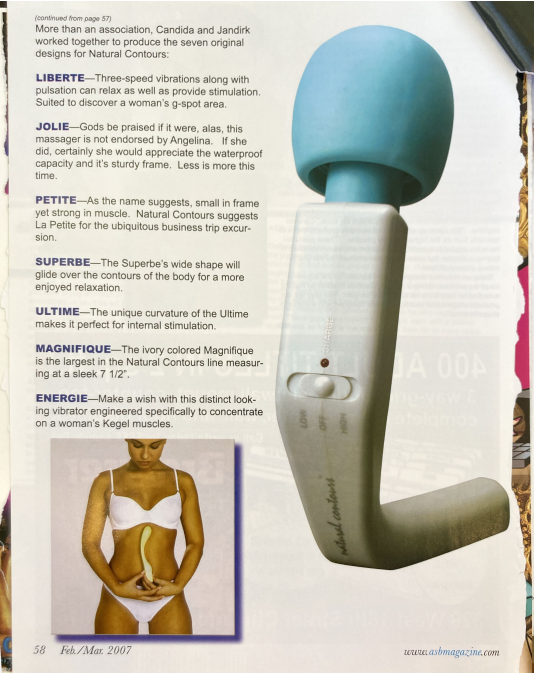
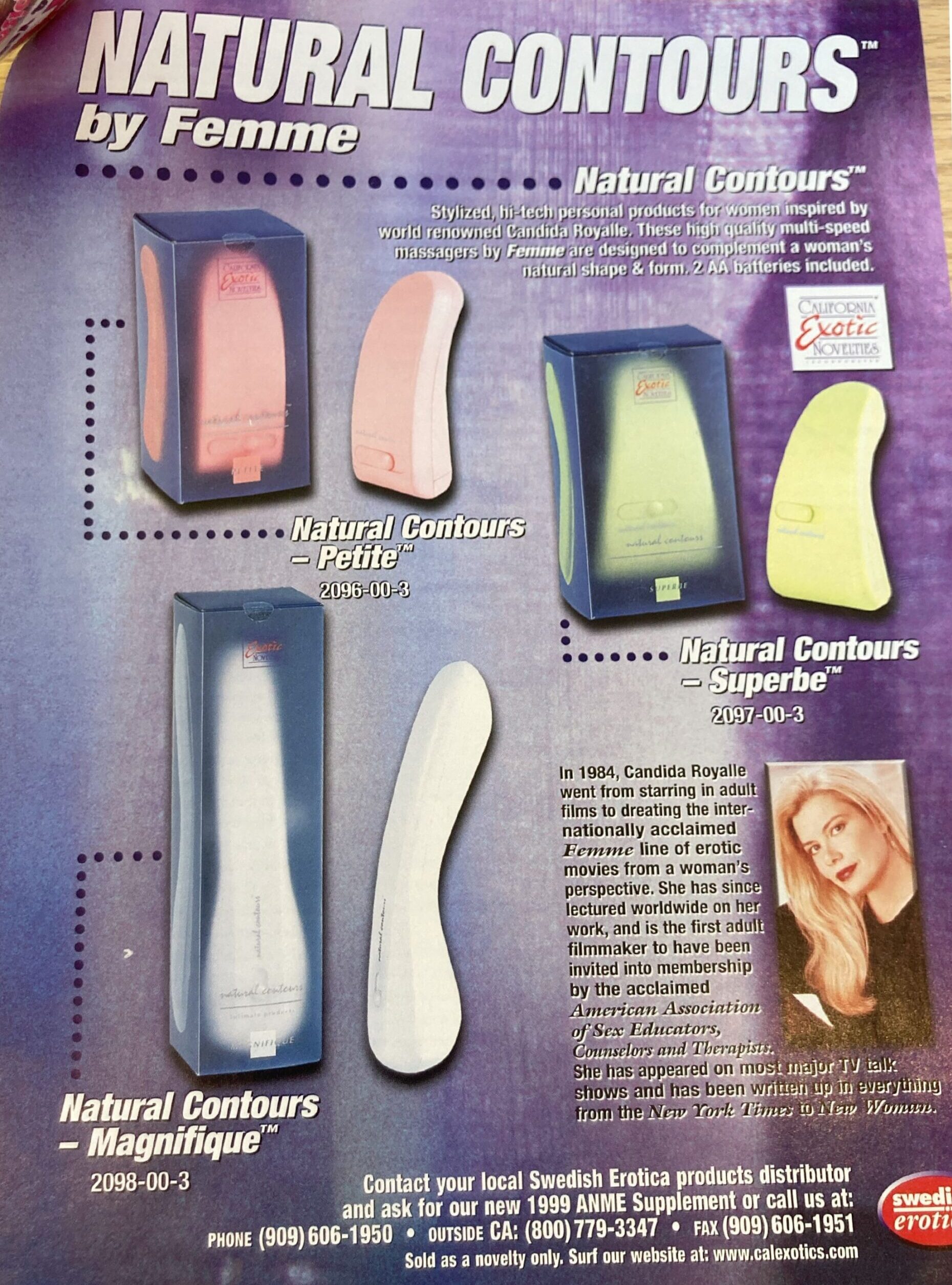
“We were the first company to create…vibrators…that sat on the woman’s pubic bone for direct clitoral stimulation,” Spellman claimed. Airs confirmed that they were one of the first companies to do so.“Natural Contours: Pioneer and Guide,” EAN: European Adult News, January 2009, 26.× A description of the vibrators in an Adam and Eve catalog from the mid 2000s declared: “No one needs to know that your sleek Euro-designed ‘hand-held’ device is not a cell phone or TV remote.”Adam and Eve Catalog, Candida Royalle Papers, Box 101, folder #10. Schlesinger Library, Radcliffe Institute, Harvard University, Cambridge, Mass.×
Though Natural Contours’ slogan was “It’s Great to Be a Woman,” they marketed their vibrators to men too. Royalle positioned their vibrators both as a tool men could use for their own pleasure and one they could use to pleasure women, which probably allowed her to subtly allay men’s fear of being replaced by vibrators. “Men shouldn’t be intimidated by a woman’s toy. He can use it on her. He can use it with her, he can even use it on himself,” Royalle told AVN Novelty magazine in 2006.Rebecca James, “Unique Products and a Unique Lady,” AVN Novelty, July/August 2006, 12.×
Their advertising straddled a difficult line—aiming to be both feminist (targeting single women) and traditional (appealing to couples who may have feared vibrators could torpedo their relationship). “Many women are seeking ways for women to safely and privately explore their capacity for pleasure as well as to relieve stress in their busy lives. Others find that introducing a personal massager improves a couples’ intimacy and communication,” a Natural Contours vibrator brochure explained.
Natural Contours received some rave reviews. “These vibrators will appeal to men and women who have never used a vibrator, as well as to those put off by the look of battery-operated vibes,” declared U.S. feminist sex toy store owner Ellen Barnard in Libido. She noted the design that “fits in my hand perfectly,” and would be “more comfortable” for people with carpal tunnel syndrome. Barnard said she wished the vibrations could be stronger, but she wrote, “I hope Candida will continue experimenting with these great shapes and make more vibes that challenge the stereotypical phallic vibrators.”Ellen Bernard, “Product Review: Candida Royalle’s Natural Contour Vibrators,” Libido: The Journal of Sex an Sensibility. Fall 1999, Vol. 11, No. 3, p. 62.×
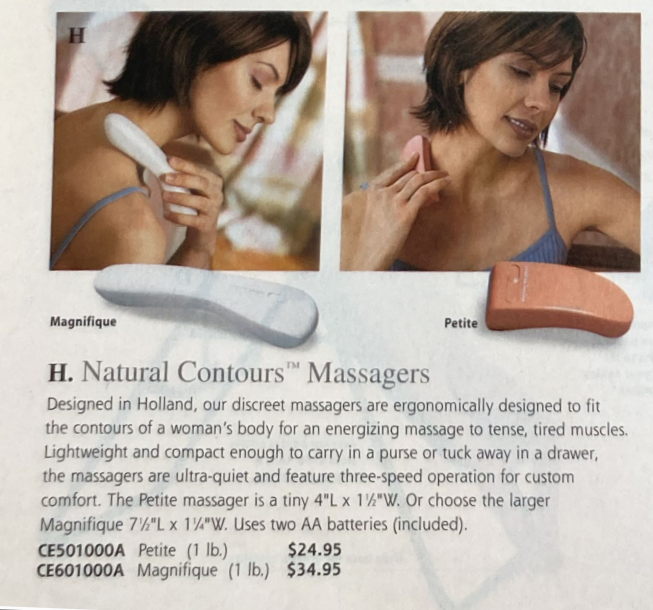
But the vibrators weren’t perfect. They were expensive, costing $25-$45 in the late 1990s and early 2000s when many similar vibrators cost $12.50-$20. A customer “really had to be sold on the whole feminine empowerment” to spend that much, Airs said. In her store, they weren’t “huge sellers,” she said, but there was “a market for them.”
Despite good reviews, getting vibrators in vanilla retailers in the early 2000s wasn’t so easy. “We had to convince mainstream venues that women are ready for these products,” Spellman told EAN. A double standard between male and female sexual devices remained, where men’s products could be advertised more openly and women’s could not. This hindered their ability to fully describe the uses of their vibrators in American catalogs. Sometimes they had to desexualize their vibrator ad copy, swapping out the words “clitoris” and “g-spot” for the vague term “dual pleasure”.
A description of her vibrators in a medical supply company catalog said they were “ergonomically designed to glide over the body’s contours, providing stimulating vibration to relieve tension, relax muscles, and improve blood flow.” Yet the PeniMax ring being advertised near Natural Contours vibrators was described as allowing men to “enjoy sex once again.”Mail Order Medical Supply Catalog {M.O.M.S.}, circa 1999, p. 17.× Pretending vibrators weren’t primarily for women’s sexual pleasure worked. They got her vibrators stocked on drugstore.com and the large Holland pharmacy chain Etos.
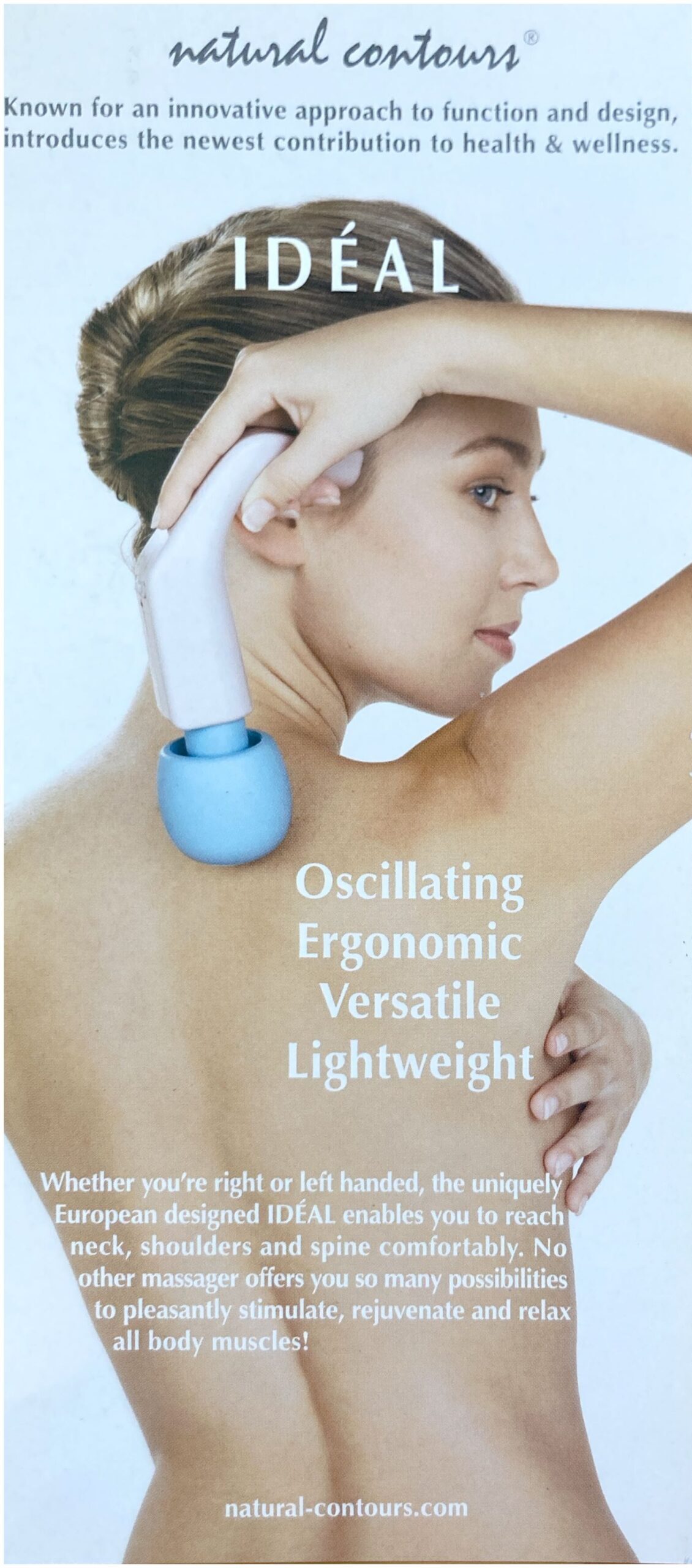
Royalle even sold the vibrators to therapists, who were already prescribing her adult films to heterosexual couples with sexual issues. The designs expanded to include “the BonBon” that Sprinkle likened to a Hershey’s Kiss; a rechargeable wand, a couples toy, and a kegel exerciser.
While some of Royalle’s toys sold more than a million units, they never reached icon status like the Rabbit or the Magic Wand. But their innovative designs shaped the sex toy industry. In September 2005, AVN Adult Novelty magazine declared that “The Natural Contours influence could be seen at nearly every dildo display.”
